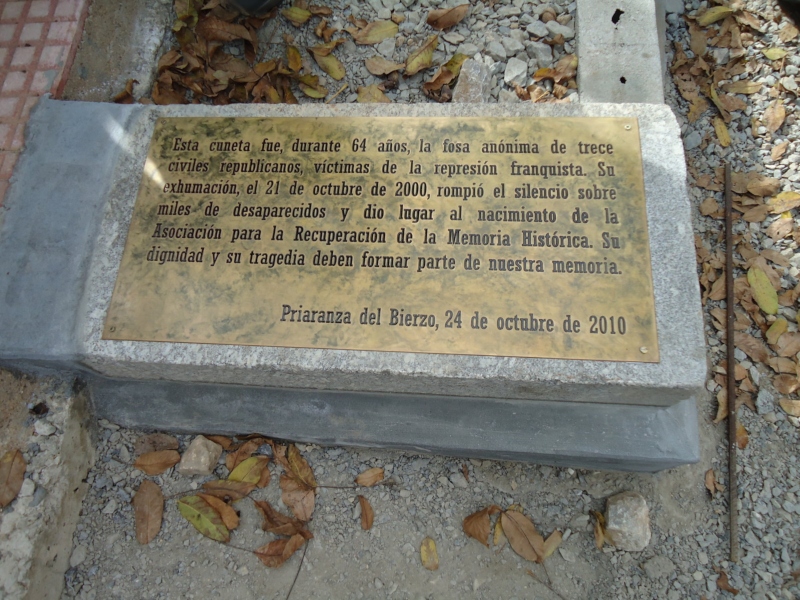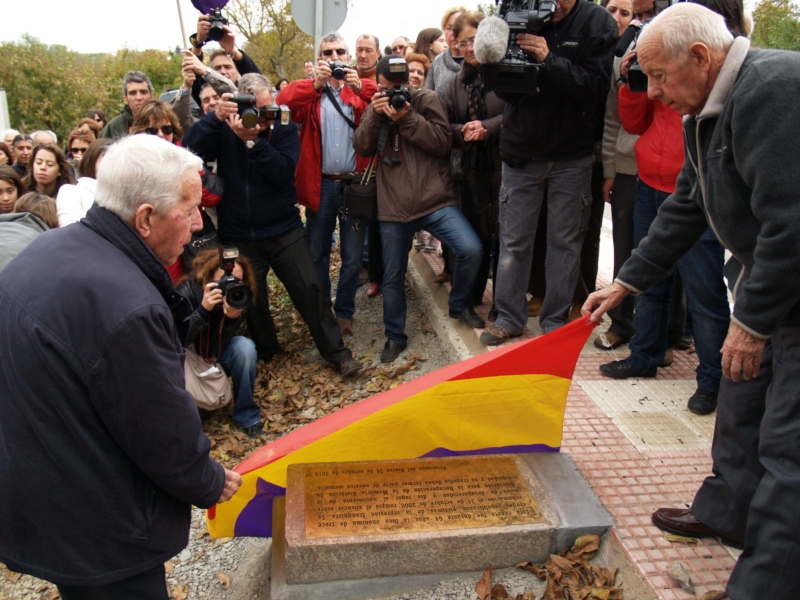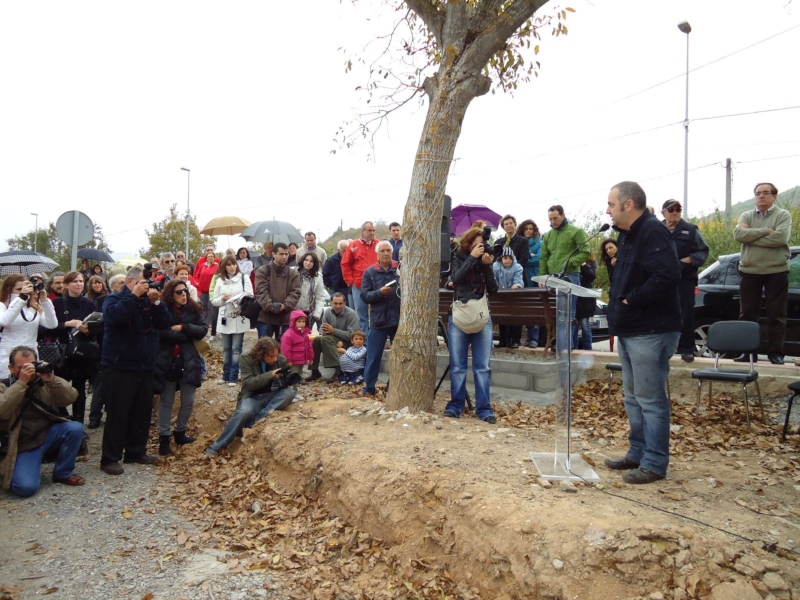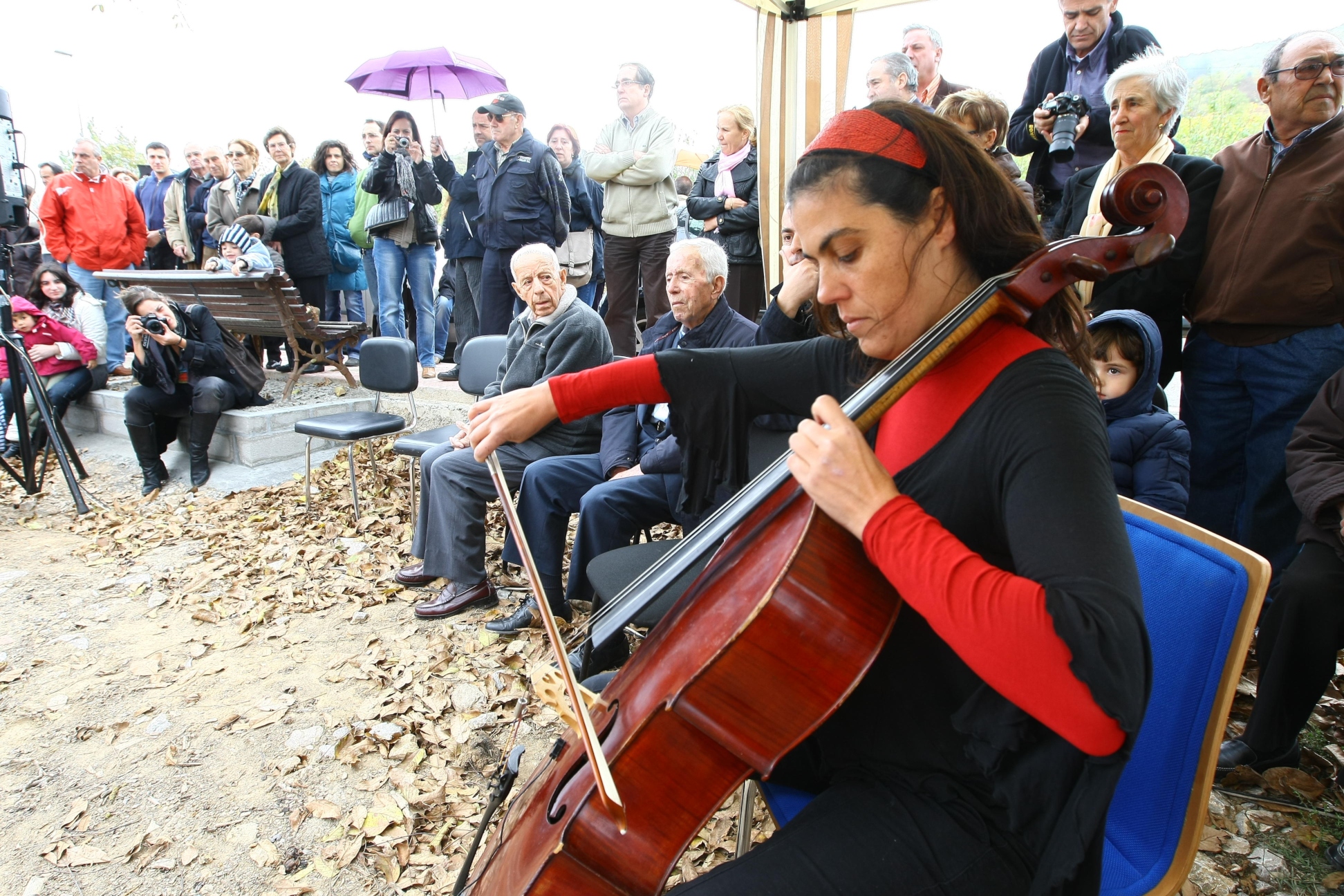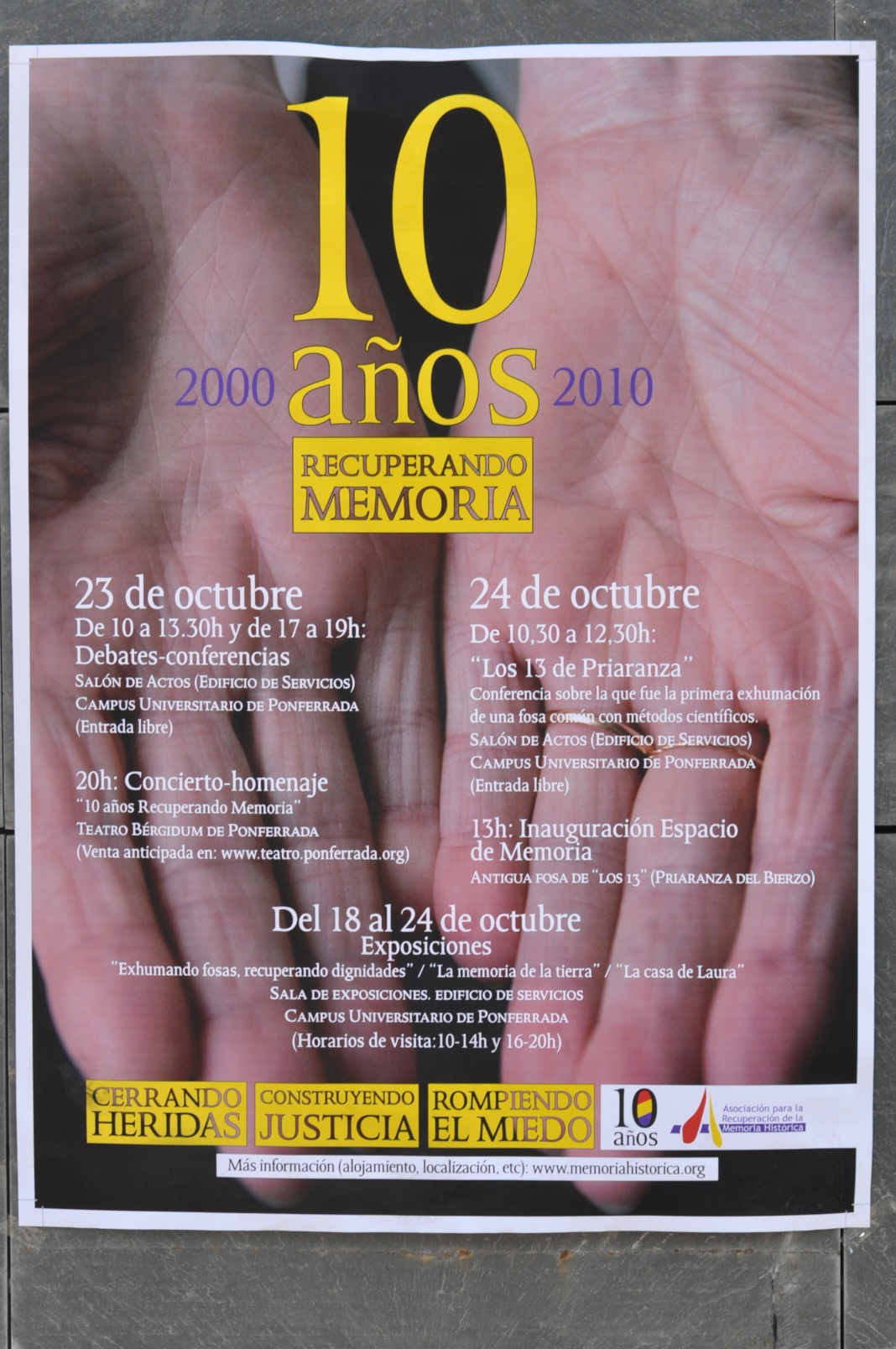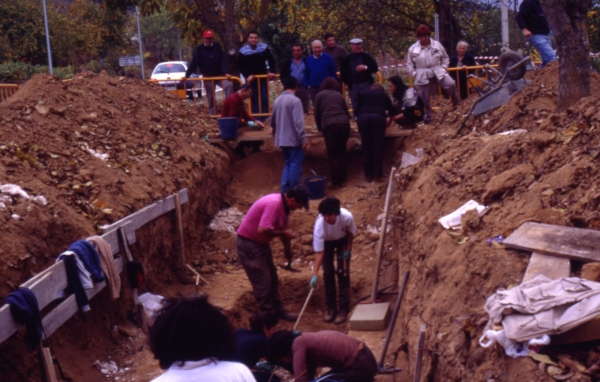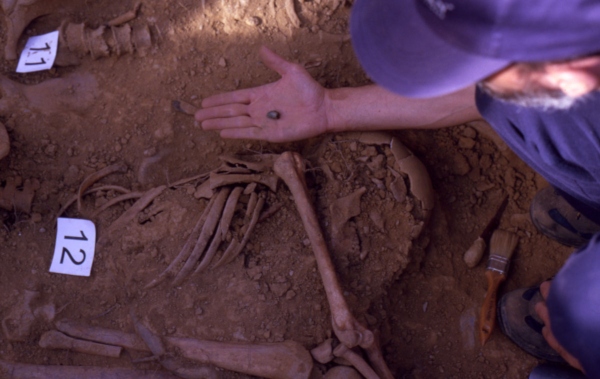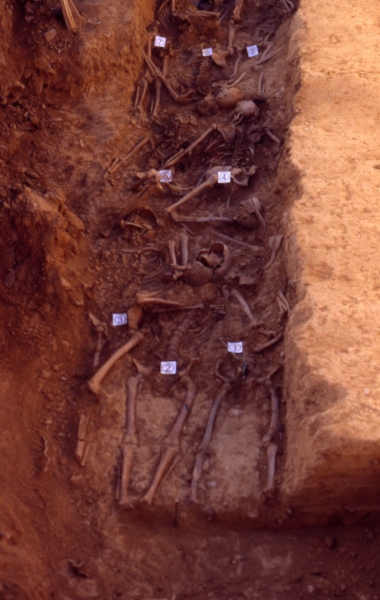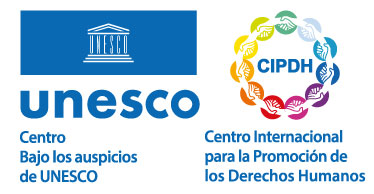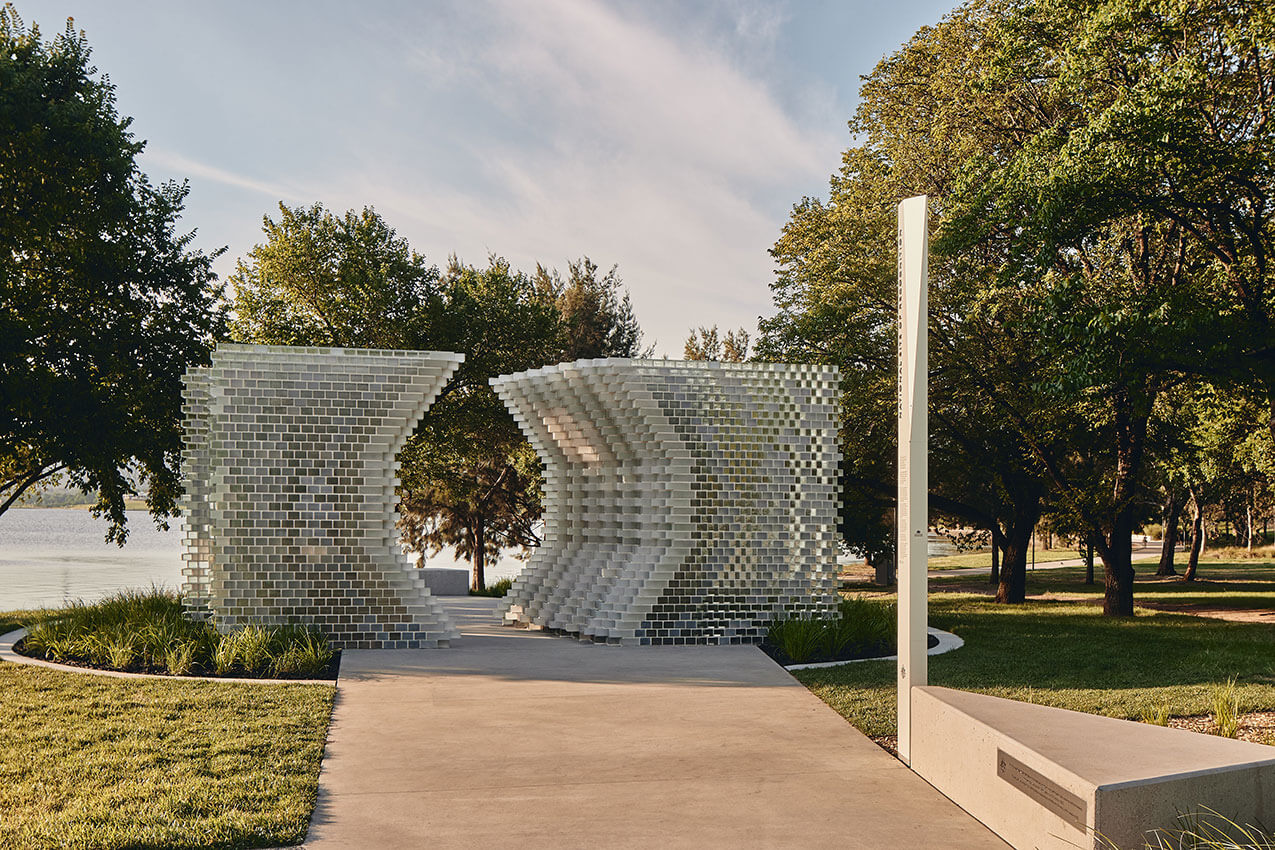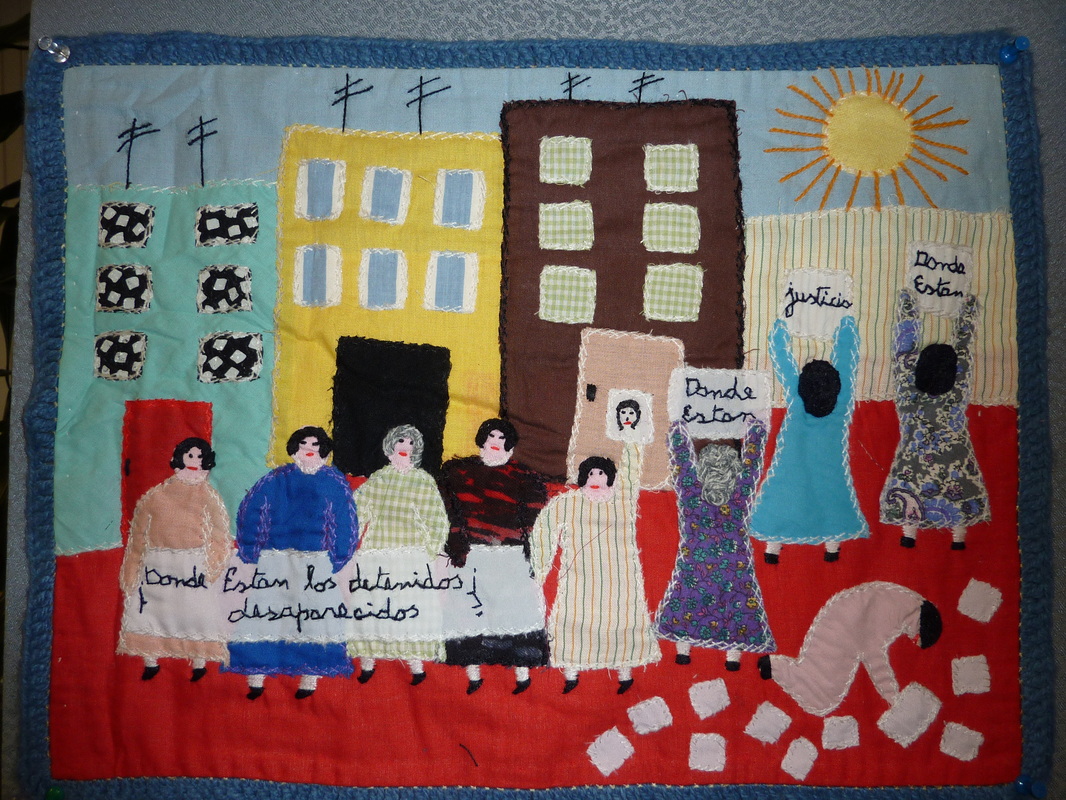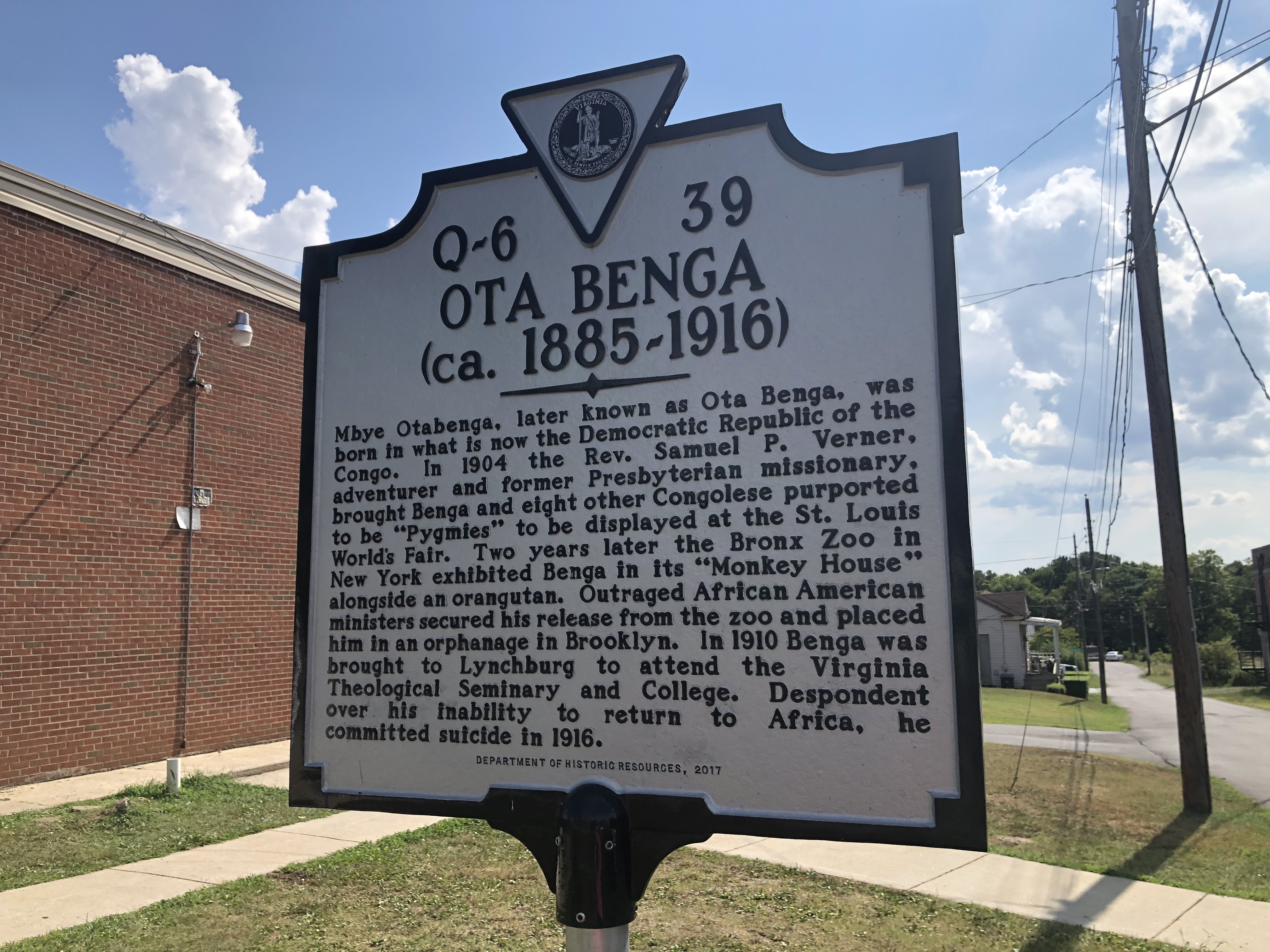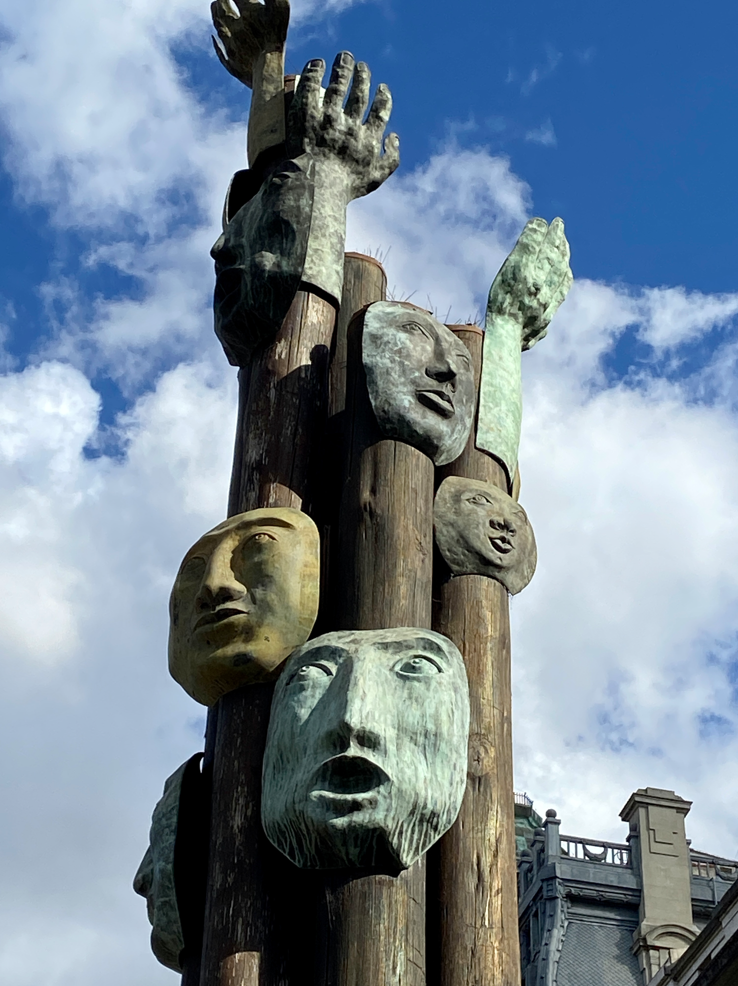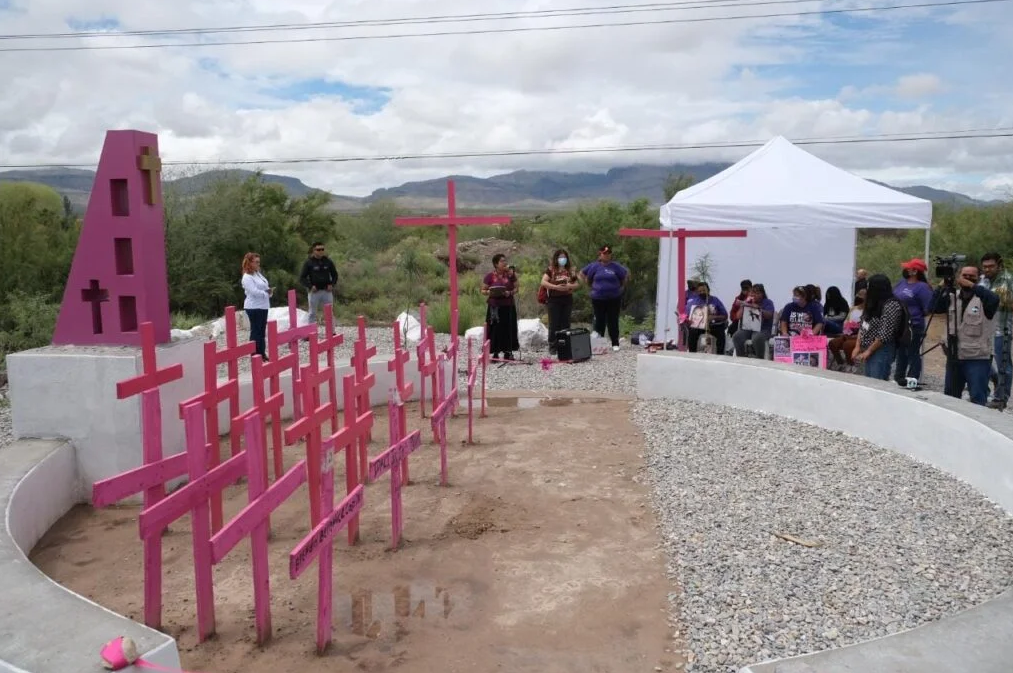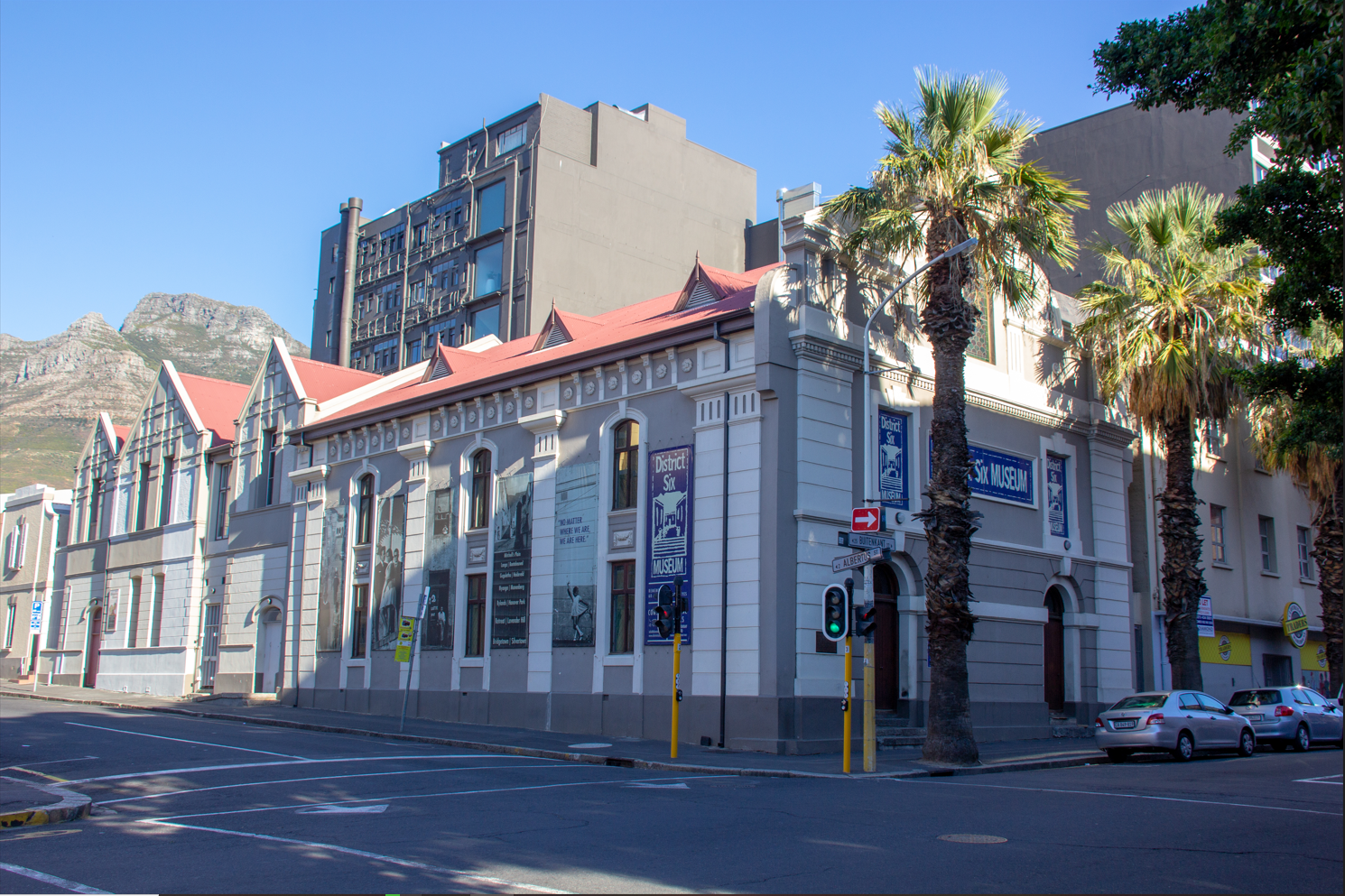Priaranza del Bierzo Mass Grave
Site
Theme: Political persecution

Address
Highway N-536
Country
Spain
City
Priaranza del Bierzo
Continent
Europe
Theme: Political persecution
Purpose of Memory
The memorial plaque identifies the remains of the victims of the Spanish Civil War buried in mass graves, and honors the victims of the Francoist Repression.
Known Designation
Priaranza del Bierzo Mass Grave
Date of creation / identification / declaration
2000
Public Access
Free
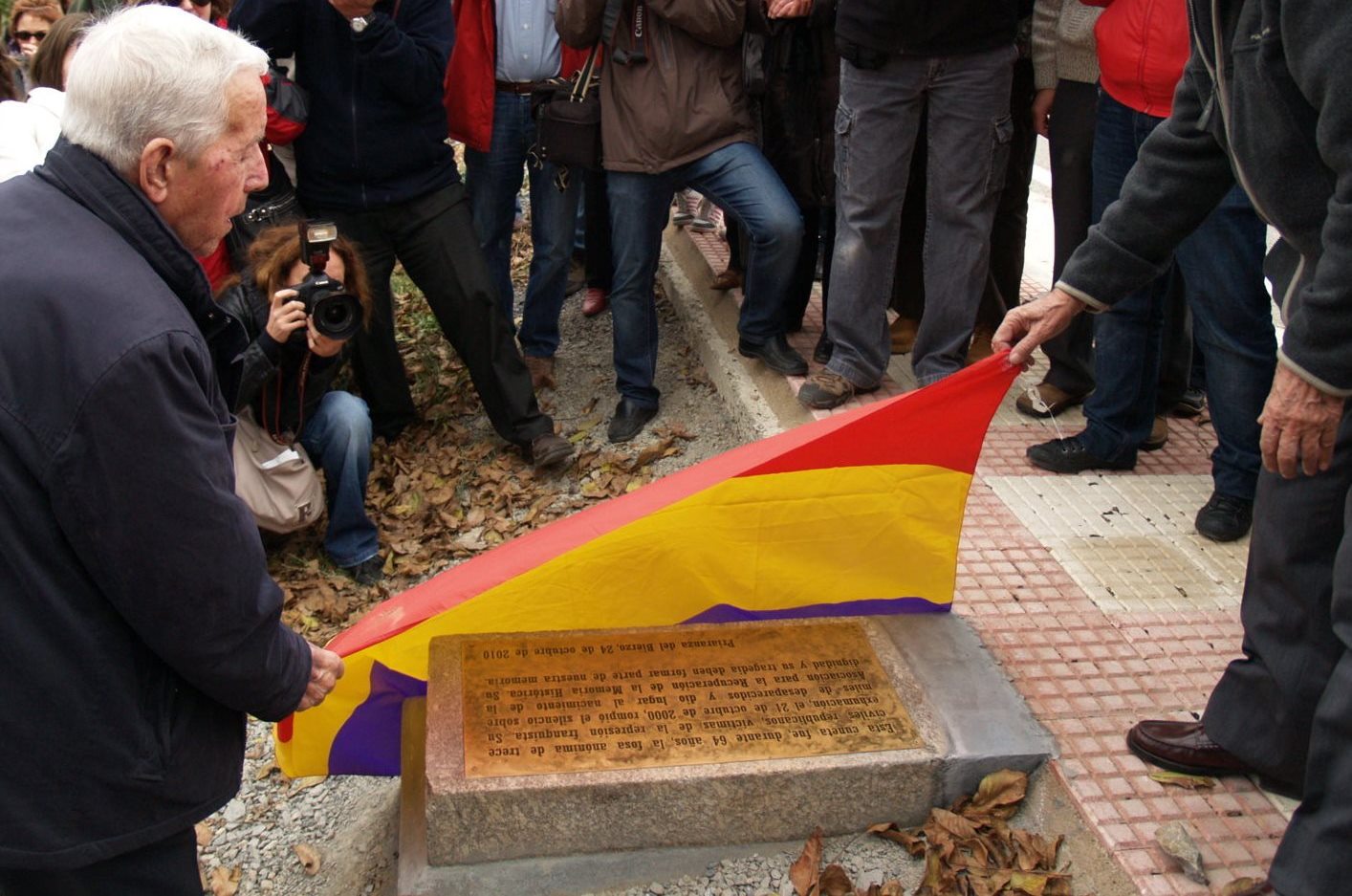
Location description
In the Priaranza del Bierzo mass grave the remains of thirteen men, who were victims of the repression of Franco’s regime, were buried for over six decades. Today, in that place there is a memorial plaque with the following engraving: “For 64 years, this ditch was the anonymous grave of thirteen republican civilians victims of the Francoist Repression. Their exhumation in October 2000 broke the silence about thousands of victims of enforced disappearance and led to the creation of the Association for the Recovery of Historical Memory. Their dignity and tragedy must always be a part of our memory.”
The Spanish Civil War caused mass political violence, both in the battle field and on the streets of Spanish cities. It initiated in Madrid with the uprising led by Generals Emilio Mola and Francisco Franco, which overthrew the republican government on 17 July 1936. The conflict ended on 1 April 1939 with the last dispatch signed by Franco, who declared his victory, establishing a dictatorship that would last until his death in 1975. It is estimated that almost two hundred thousand people were killed in the civil war, out of which between 108,000 and 114,000 disappeared or were buried in ditches or mass graves that are still unidentified. The most violent incidents happened between August and October 1936.
On 16 October 1936, a group of fifteen republican men were captured and put on a truck at the Villafranca del Bierzo City Council. When the vehicle stopped on the outskirts of the village of Priaranza del Bierzo, the men were shot and buried in a mass grave. Only one of them got away. One of the bodies could be recovered by the family after negotiating with the gravedigger, but thirteen bodies were left buried in the grave. After 64 years, at the request of one of the victims’ grandchildren, on 28 October 2000, the remains of the victims were exhumed from the common mass grave. Not all bodies from the group could be identified, so the identity of some of the victims is unknown.
In 2000, in the village of Priaranza del Bierzo, the first exhumation of bodies from a common mass grave was carried out with scientific methodology, at the request of a journalist and grandchild of one of the victims of the massacre. The initiative was supported by the Mayor of Priaranza del Bierzo, and a group of volunteers coordinated by archaeologists and forensic anthropologists took part.
The media and social impact that the exhumation had was significant and gave rise to many contemporary debates about the nature and reach of Spain’s repressive process. This resulted in the creation of the Association for the Recovery of Historical Memory (ARMH), which started a social movement linked to the search for victims of enforced disappearance by the Francoist repression that was able to recollect data and request remedies for the victims’ families. Like a ripple effect, claims and grievances by more families arose and several regional offices were created in cities like Asturias, Extremadura, Cataluña, Andalucía, Galicia, among others. The ARMH, with the support of volunteers and the contributions of families, promotes the identification of the remains found, with the aim of handing them over to their families, in accordance with the forensic anthropology protocols.
The increasing number of exhumations had several consequences. The most emblematic was of legislative nature: the Spanish government confirmed the law commonly known as Ley de Memoria Histórica (Historical Memory Act), which was passed by Congress on 31 October 2007. One aspect of the law refers directly to the opening of graves that were placed under the care of the State, since up until that moment were often initiated outside of the legal framework, by individuals, associations or autonomous communities.
Another relevant consequence was the publication of an interactive map of the mass graves of the civil war and the dictatorship by the Spanish Ministry of Justice in April 2011. In parallel, the Official State Gazette published on 27 September 2011, a protocol aimed at establishing good practices with regards to exhumations of civil war and dictatorship victims.
Since its creation in 2000, the ARMH has exhumed more than 150 graves throughout Spain, recovering the remains of more than 1,400 people that were killed during the Spanish Civil War and the Francoist dictatorship.
To commemorate the 10th anniversary of the exhumation of Priaranza del Bierzo, scientific meetings and exhibitions were held, and a memorial plaque of the mass grave was unveiled, which is currently at the site, to honor the victims of the Spanish Civil War.
